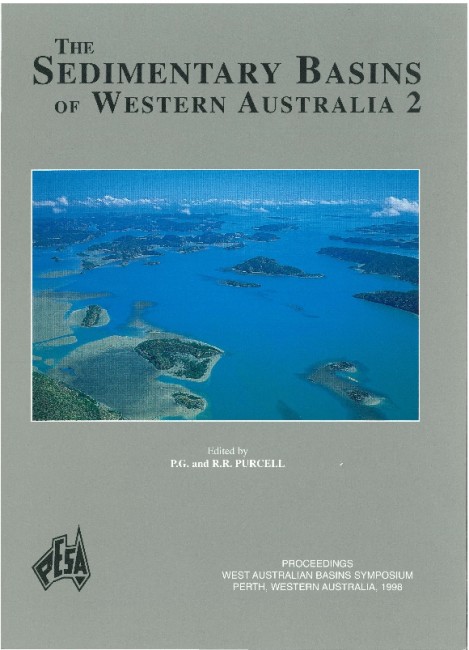Publication Name: The Sedimentary Basins of WA
Authors: N. W. Archbold
Publication Volume: 2
Date Published: December 1998
Number of Pages: 22
Reference Type: Book Section
Abstract:
Marine Permian strata of the onshore Perth, Carnarvon, Canning and Bonaparte basins have traditionally been correlated with Uralian, Tethyan and other sequences by means of marine invertebrate faunas. Marine benthonic invertebrate assemblages are ideal for using as precise local and provincial zone indicators. Brachiopods in particular evolved rapidly, were short lived as species and yet were abundant in the Western Australian marine Permian. An integrated sequence of seventeen brachiopod zones ranging in age from the Early Permian (Asselian) to high in the Late Permian (Djhulfian) occurs in Western Australia. The most complete sequence of zones, in superpositional relationships, is found in the Carnarvon basin against which the recognised zones for the Perth, Canning and Bonaparte basins can be matched. The zones in the Perth and Carnarvon basins have been integrated with palynological data and hence provide a valuable combined technique for intrabasinal, interbasinal and global correlations. Such combined techniques for correlation are all the more important for the Permian Period given the pronounced provincialism of most faunas and floras.Combined macrofossil and palynological zonation schemes have recently been studied from several cored
sections in the onshore Perth, Carnarvon and Canning basins. These investigations serve to indicate the considerable potential for future refinement of Western Australian Permian biostratigraphical schemes and their global correlation. One brachiopod zone from the Perth basin (the Sulciplica occidentalis Zone) is only known from subsurface material. Permian brachiopod zones are known from the surface onshore Canning and Bonaparte basins and one of these, (the Waagenoconcha imperfecta Zone) has been recognised offshore from the Sahul Platform.
Improved dating results in refined models for interpreting palaeotemperature changes and patterns of Permian oceanic and shallow sea currents. These effects extend beyond the onshore and offshore Permian basins of Western Australia and add to the knowledge of global change.


